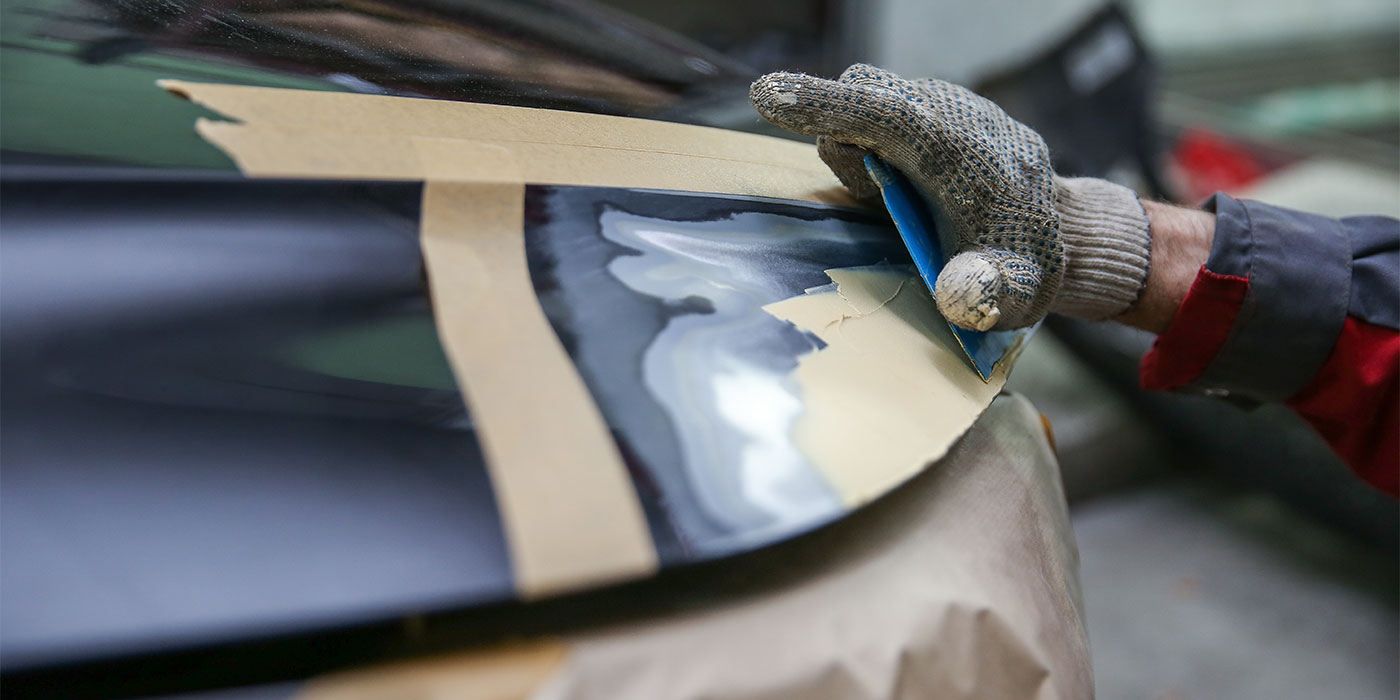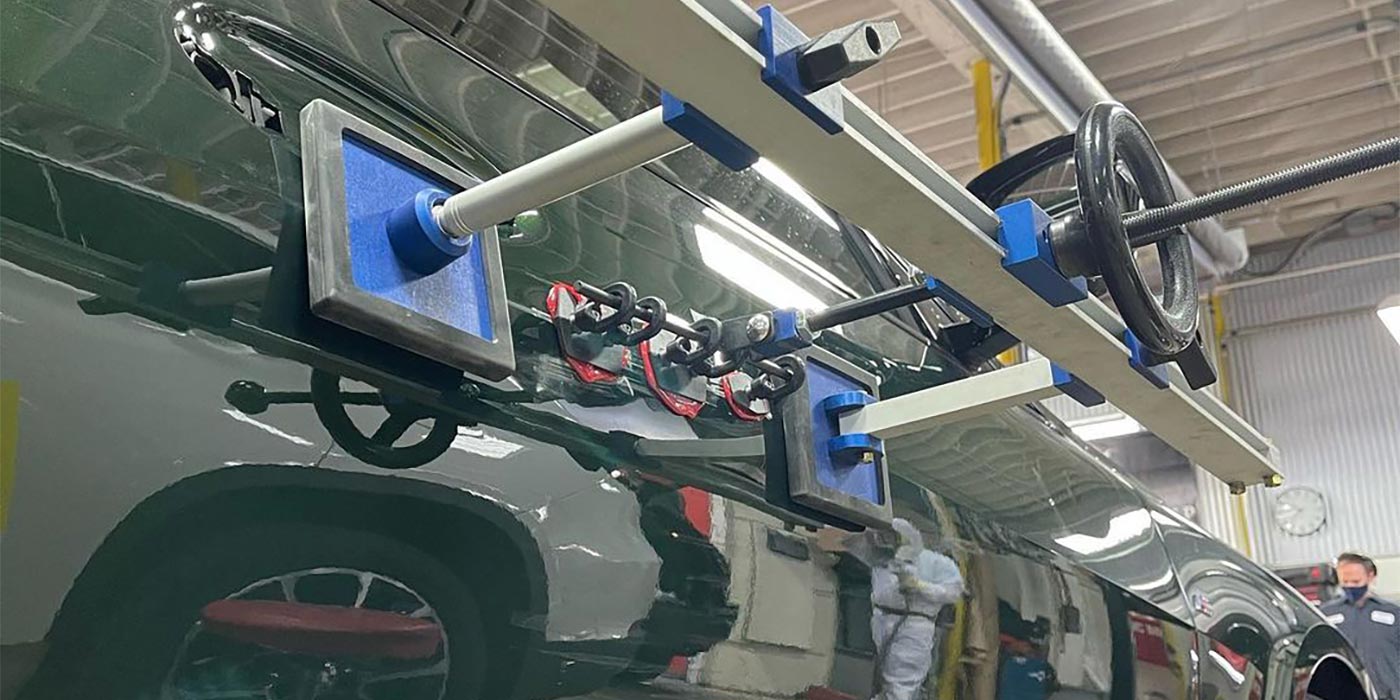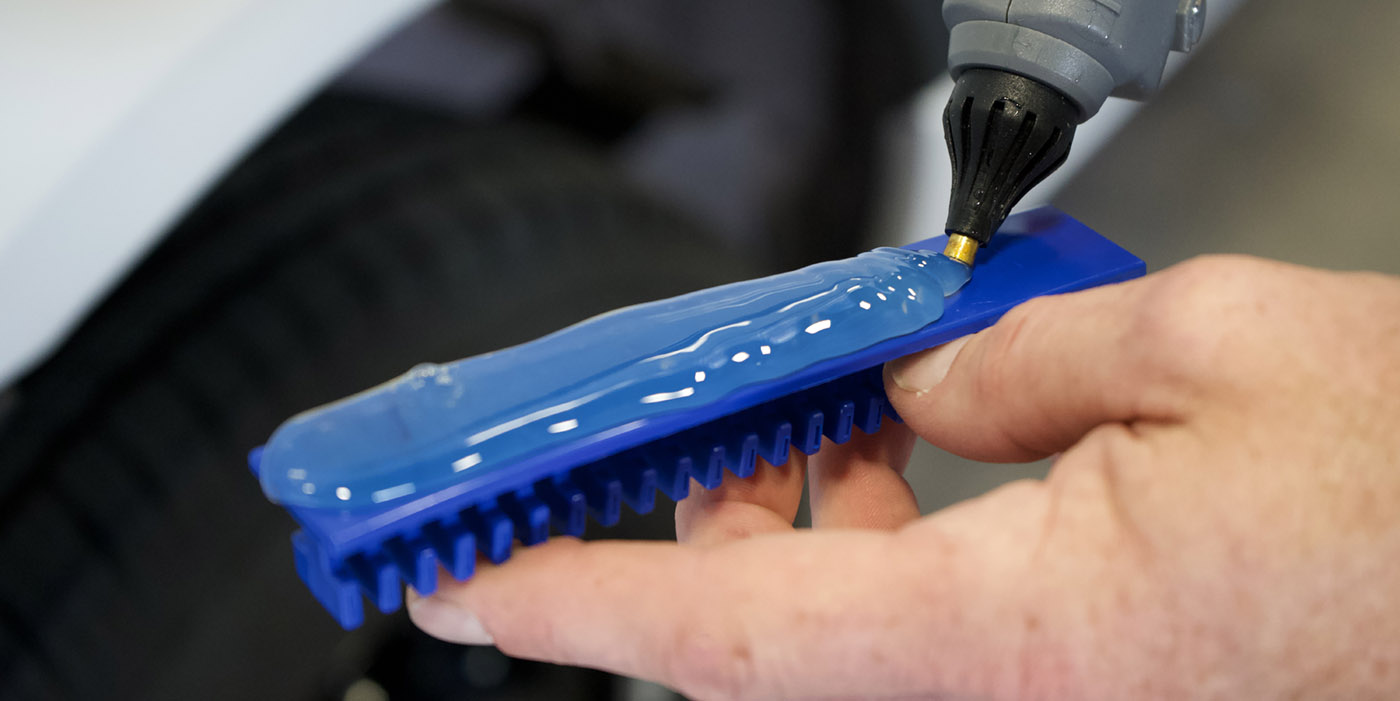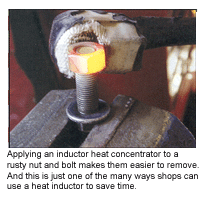
A fairly recent entrant into the tool side of the collision repair industry is the heat inductor.
“What’s that?” you ask.
Well, it’s nothing new really. Heat inductors have been around in various industries for about 100 years and are commonly used in the manufacturing process for things like case hardening of gears and shafts. They’re also used in cook tops on stoves to allow a quicker, more even heat.
But heat inductors are relatively new to the collision repair industry. I first saw one demonstrated at NACE in 1999.
I try to resist buying gadgetry, but I admit that I’m very unsuccessful at it. I have a small room filled with very new-looking gadgets that are actually quite old.
When I first saw the heat inductor being demonstrated, I was strongly attracted to its amazing attributes. I made only a token effort at resisting the purchase and was told recently by the manufacturer that I have one of the first ones sold (No. 8, I think)!
Although it isn’t particularly unique that I have an early model of a tool, it is unusual that the tool isn’t in my room of unused tools and that the manufacturer is still in business.
Wow! I finally made a wise purchase. (I hope my wife reads this!) Even more impressive, we don’t just occasionally use our inductor. We use it every day — sometimes several times a day.
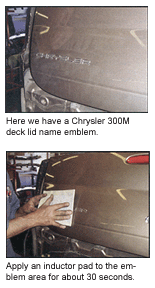
What Is It?
Just what is a heat inductor?
I’ve always thought that to use a tool or a piece of equipment, it’s wise to understand how it works and what exactly it’s intended to do.
(I know that’s not an entirely accepted practice in our industry since it isn’t uncommon to walk out into your shop and find that someone has discovered a new use for a tool that was never intended — such as using your nice flat-blade screwdriver as a chisel. My most recent discovery … I found my helper using my 12-inch upholstery scissors to cut stainless steel screen for bumper cover reinforcement!)
So humor me a little here, so you can understand how a heat inductor works and what it’s intended to do for us.
Heat inductors are electromagnetic components. When electrical current passes through wire, which is wrapped around a non-conductor (phenolic, plastic, etc.), it forms a high-frequency magnetic field.
This magnetic field then travels through a few inches of space, such as plastic trim, moldings, sound deadeners and glass, until it reaches the metal base (inductors don’t work on fiberglass or ABS bodies). Once this magnetic field reaches the metal, it meets electrical resistance, which is what makes it work.
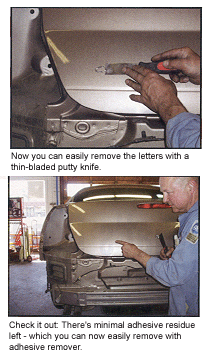
The better conductor of electricity a metal is, the less effective a heat inductor will be because there’s less resistance. So steel, which isn’t as good a conductor as copper, gets quite hot when an electromagnetic field passes through it.
We use a lot of steel in car bodies, so they’re ideally suited to the use of a heat inductor. A heat inductor also will work for heating aluminum, with the proper fixture or attachment, but a much lower temperature will be reached because aluminum is a much better conductor of electrical current than steel is — therefore, less resistance.
I hope this simplified explanation helps you to understand how the heat inductor works.
What It Can Do for You
Lots of things … removal of side moldings, emblems, weather stripping, decals, glass, undercoating, sound deadeners and caulking. You can also heat rusted nuts and bolts in areas where a torch would be extremely damaging.
I know what you’re thinking: “Hey! I can use my heat gun just as well.”
No you can’t! That’s what I thought too — but I was wrong.
The reason the heat inductor works so well is because it heats the metal from the inside out and releases the glue cleanly. On decals or overlays for example, the surface becomes warm when the inductor is applied to it, releasing the glue from the paint instead of the decal. So now, when you remove the decal, most of the glue is left on the decal, instead of on the surface paint.

It works the same way on moldings. You apply the inductor pad on the outside, but the heat moves from the steel through the paint into the adhesive, releasing the adhesive from the paint, not the molding. This saves time on clean up and materials.
Heating rusted nuts on the backside of Ford pickup bumpers works great when you don’t want to burn paint or turn chrome blue. You can also remove glass without breaking it.
Potential Problems
Any tool in the hands of an
idiot is a weapon. And weapons are used to create damage.
For example, you need to be careful when removing glass not to overheat the pinch weld that the adhesive and the glass rest on. Steady outward pressure on the glass works best. I use a porto-power with a rubber ball on the inside to achieve constant pressure and, in effect, a release.
If you overheat the pinch weld, you can bubble the paint under the urethane, which could seriously compromise the structural integrity of the bond. Be smart.
And remember, the inductor heats metal when it’s in the proximity of metal. I know …
I was removing a bonded glass on the rear door of a four-door pickup. I had a plastic bag full of bolts and nuts from the door that I’d laid down on the floor mat. I then placed my inductor and heating pad attachment on top of the bolt bag and floor mat. When I removed the inductor 15 minutes later, the bolts in the bag had melted the man’s nice new floor mat!
Try It, You’ll Like It
I think heat inductors are
great tools to assist us in doing our jobs better. They have many uses where flameless heat or heat from the inside out is best.
I’ve had my inductor for five years and have had no problems whatsoever related to durability. And it gets a lot of use, every day, several times a day.
And even though I may have been one of the first shop owners to purchase and use a heat inductor, I’m not alone anymore. The manufacturer of my unit told me that they now have several thousand units in the field.
Give an inductor a try. Your wife won’t be mad about your spending the money because you’ll actually use this tool!
Writer Mike West, a contributing editor to BodyShop Business, has been a shop owner for more than 30 years and a technician for more than 40 years. His shop in Seattle, Wash., has attained the I-CAR Gold Class distinction and the ASE Blue Seal of Excellence.
|
Less Costly Than Hydro-Forming
In contrast to hydro-forming, Hot Metal Gas Forming (HMGF) uses only 1,000 PSI to form the same type of shapes through the use of heat inductors. The heat inductors are used to heat the metal to a formable temperature, and then gas is injected into the part, causing expansion of the heated area. The part is actually encapsulated in tooling, which includes the heat inductor. When the part reaches the optimum temperature for forming, the gas is forced into the part, causing the expansion of the metal against the designed tool wall — to take on the decided shape. This represents a savings in tooling and production costs because of the significant reduction in pressure per square inch required for hydro-forming. Quenching is an important part of this process because it speeds up production time and enhances the tempering procedure. Metal that’s formed this way reduces forming costs, reduces weight and enhances fuel efficiency, while allowing the production of some very strong, complex forms. This process allows a 50 percent expansion of steel and a 150 percent expansion of aluminum. That’s amazing! |






